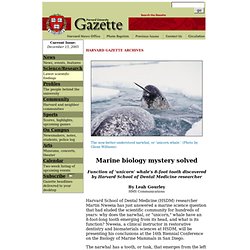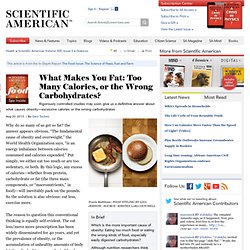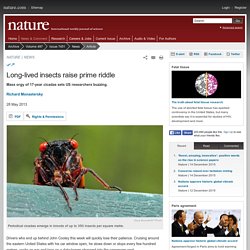

Teens Like Science, Not Science Class, Study Finds. These Rainbows Are Animals Taking Shape. The biggest next-gen video games take gigabytes of code and renders it as a fluid experience.

Scientists can do the same with the code of life, but they need some serious computing power. What you see below is a fruit fly larvae taking shape, imaged by the MRC Clinical Sciences Centre of the Imperial College London. Each colored dot is a cell’s nucleus and the wispy tails behind them are the movements of each cell over the previous five minutes. It’s a developmental dance that takes terabytes to translate: Using powerful imaging techniques, we’ve been able to track the movements of developing cells for a while now, but it’s hard to do anything with all that data. And we can now track some pretty complicated beginnings. Not only do images like these let us see how organs and structures form in various animals, they let us see exactly what is going wrong when something isn’t forming correctly. The Salamander That Has Photosynthesis Happening Inside It. Amidst life’s profligate swapping and sharing and collaborating, one union stands out: the symbiosis of spotted salamanders and the algae living inside them.

Their uniqueness is no small matter. After all, mutually beneficial relationships between species are legion. Our own genomes are suffused by DNA from other organisms—not inherited from common ancestors, but picked up through the drift of DNA across species. There are cellular mitochondria, the power-generating product of some long-ago meeting, and of course microbiomes, those microbes that account for 90 percent of the cells in animal bodies, and aid in all sorts of physiological processes. Walk through a forest and the trees’ roots are intertwined with co-evolved fungi. There’s no end to it, yet the spotted salamander—Ambystoma maculatum, to be exact, common to eastern North America—displays something unique. Two years later, another finding further illuminated the relationship (pdf), almost literally. New Clues and Some Wild Guesses About Those Strange Spider Towers in the Amazon - Wired Science.
Late last week, we revealed that the elaborate, fenced-in spires spotted in the Peruvian Amazon are made by spiders.

Marine biology mystery solved. Function of 'unicorn' whale's 8-foot tooth discovered by Harvard School of Dental Medicine researcher By Leah Gourley HMS Communications Harvard School of Dental Medicine (HSDM) researcher Martin Nweeia has just answered a marine science question that had eluded the scientific community for hundreds of years: why does the narwhal, or "unicorn," whale have an 8-foot-long tooth emerging from its head, and what is its function?

Nweeia, a clinical instructor in restorative dentistry and biomaterials sciences at HSDM, will be presenting his conclusions at the 16th Biennial Conference on the Biology of Marine Mammals in San Diego. What Makes You Fat: Too Many Calories, or the Wrong Carbohydrates? Why do so many of us get so fat?

The answer appears obvious. “The fundamental cause of obesity and overweight,” the World Health Organization says, “is an energy imbalance between calories consumed and calories expended.” Put simply, we either eat too much or are too sedentary, or both. By this logic, any excess of calories—whether from protein, carbohydrate or fat (the three main components, or “macronutrients,” in food)—will inevitably pack on the pounds. So the solution is also obvious: eat less, exercise more. The reason to question this conventional thinking is equally self-evident. 10 of the Deadliest Proteins on Earth. Long-lived insects raise prime riddle. Gerry Broome/AP Photo Periodical cicadas emerge in broods of up to 350 insects per square metre.

Drivers who end up behind John Cooley this week will quickly lose their patience. Hollies Get Prickly for a Reason. With shiny evergreen leaves and bright red berries, holly trees are a naturally festive decoration seen throughout the Christmas season.

They're famously sharp. But not all holly leaves are prickly, even on the same tree. And scientists now think they know how the plants are able to make sharper leaves, seemingly at will. (Watch a video about how Christmas trees are made.) A new study published in the Botanical Journal of the Linnean Society suggests leaf variations on a single tree are the combined result of animals browsing on them and the trees' swift molecular response to that sort of environmental pressure. Mysterious Underwater ‘Crop Circles’ Discovered Off the Coast of Japan. According to the National Oceanic and Atmospheric Administration less than five percent of the world’s oceans have been explored, meaning that 95% of what lies deep underwater on Earth has yet to be seen by human eyes.

Step into an optical illusion. What Animals See! Infographic. 100 Very Cool Facts About The Human Body. The Brain The human brain is the most complex and least understood part of the human anatomy.

There may be a lot we don’t know, but here are a few interesting facts that we’ve got covered. Nerve impulses to and from the brain travel as fast as 170 miles per hour. Plants & Animals Articles. Students discover that native ants use chemical weapon to turn back invading Argentine ants.